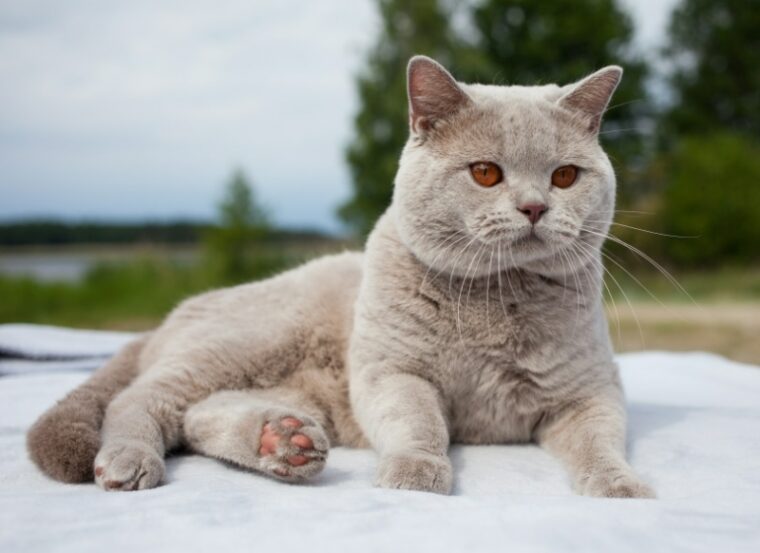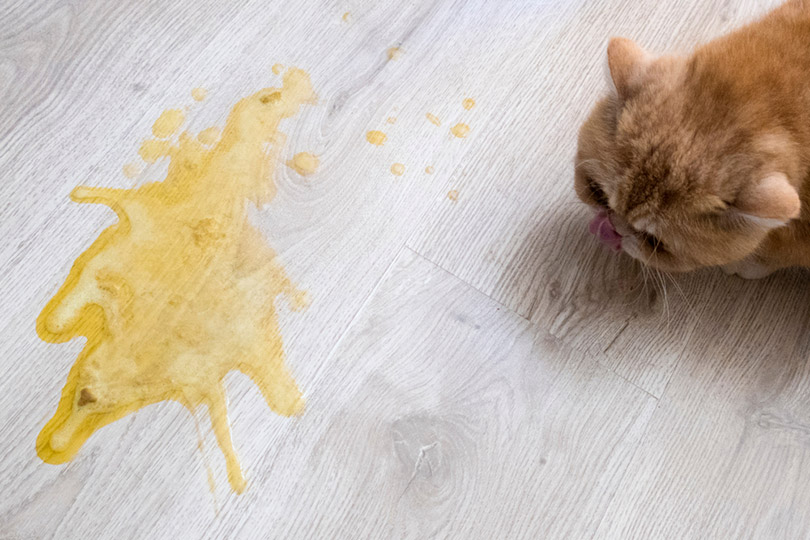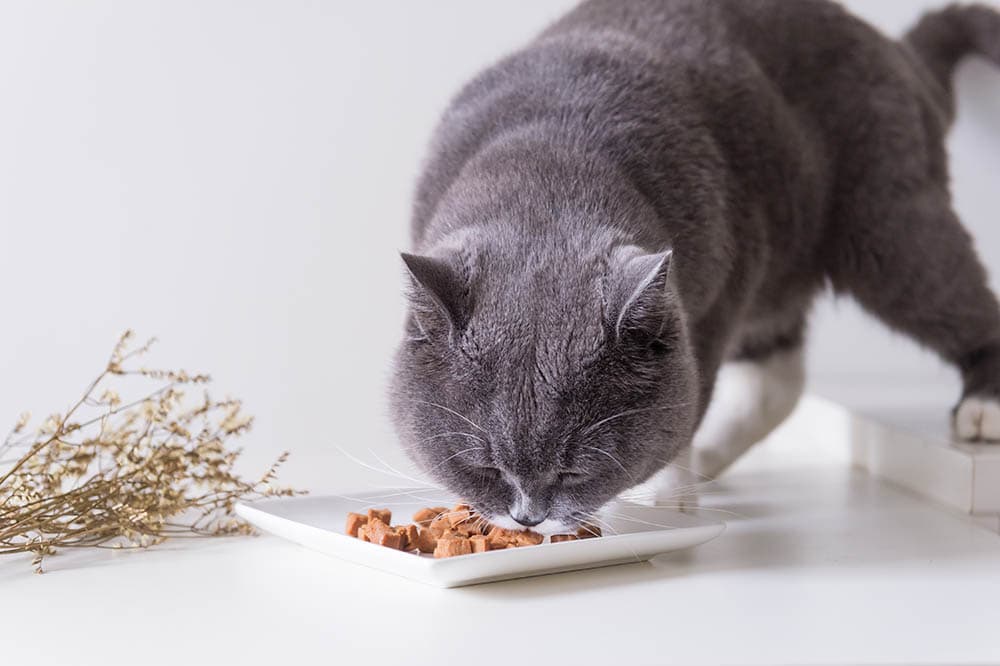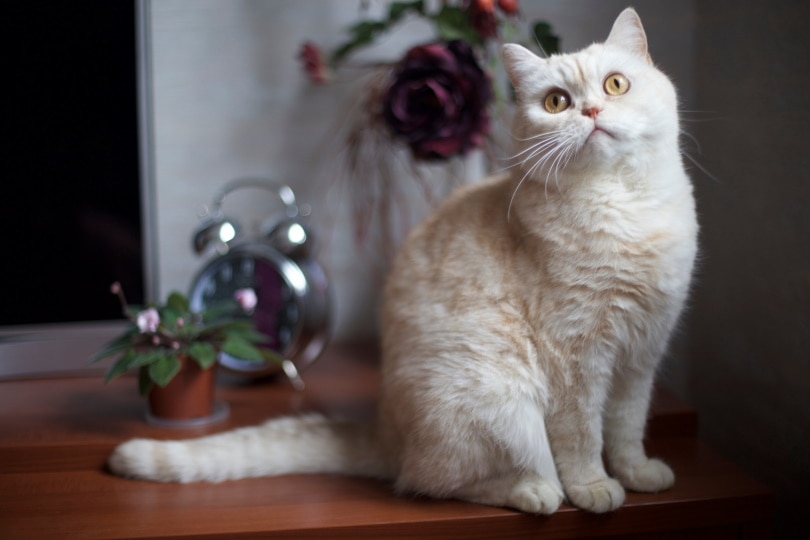
The British Shorthair is a popular cat breed known for its easy-going attitude and thick, dense coat that comes in many colors and patterns. If you have one of these beautiful cats, you know your little friend is truly special.
Because you care so much about your cat, we’ve summarized the most common health concerns of the British Shorthair breed. This information will help you know what to watch for and hopefully assist you in taking some measures to prevent your cat from becoming seriously ill.
The 5 British Shorthair Cat Health Problems
1. Polycystic Kidney Disease (PKD)
Because the British Shorthair has been bred with the Persian breed, these cats are susceptible to polycystic kidney disease, or PKD, just like Persians are. This inherited disease leads to the formation of several fluid-filled cysts in the kidneys.
A cat with PKD will likely have the cysts all its life, beginning with very small pockets of fluid that grow over time and eventually interfere with normal kidney function.
Most often, a cat with PKD will have slow-growing cysts and won’t typically have any signs of kidney disease until they’re around 7 years of age.
If you notice your British Shorthair has any of these symptoms, contact your veterinarian right away. If your vet suspects PKD, they may conduct a genetic test to see if your cat tests positive. If the test is positive, your vet may recommend a special feline diet or prescribe medication to address the signs of kidney failure.

2. Hypertrophic Cardiomyopathy (HCM)
British Shorthairs are susceptible to developing hypertrophic cardiomyopathy, or HCM. HCM is a heart condition that makes the walls of the heart thicken and decreases the organ’s efficiency.
A cat with HCM may have a heart that beats too rapidly, which increases the heart’s oxygen usage. This, in turn, can cause heart cells to die. When cells of the heart die, the heart can’t function properly. A malfunctioning heart can ultimately lead to the formation of blood clots in the heart or even congestive heart failure.
It’s important to know that not all cats with hypertrophic cardiomyopathy appear to be sick. However, others may show clear signs of congestive heart failure as fluid builds up in and around the lungs.
If you suspect your cat has HCM, get them to the vet asap. Your vet will use echocardiography to view your cat’s heart to see if the walls are thick and whether the blood is pumping correctly. Your veterinarian may need to refer you to a veterinary cardiologist if they don’t have access to the tools to perform an echo.
While there is no cure for hypertrophic cardiomyopathy, your vet can put your cat on medication to control their heart rate, alleviate lung congestion, and prevent the formation of blood clots.
3. Arterial Thromboembolism
British Shorthairs with heart disease can develop blood clots called arterial thromboembolism. These blood clots often become lodged just past the aorta, blocking normal blood flow to the animal’s rear legs. When this occurs, a cat’s legs may become cold to the touch, painful, or paralyzed.
Arterial thromboembolism is a fast-developing, life-threatening disease that must be addressed right away. If your cat survives these blood clots, they most likely will regain full function of their legs.
If your Brit has a sudden case of hind leg paralysis, is vocalizing their pain, or cannot walk properly, rush your cat to the vet. Your veterinarian will conduct a full health exam that may include X-rays, an electrocardiogram (ecg), or an echocardiogram to determine if your cat has blood clots in their heart.
If it’s found that your cat has arterial thromboembolism, your vet will stabilize your cat’s health and use anticoagulant medication over the course of several days to remove the clot and thin the blood. Cats that do not respond to treatment, may unfortunately have to be humanely euthanized.

4. Peritoneal-Pericardial Diaphragmatic Hernia (PPDH)
Some British Shorthair cats develop a type of hernia called a peritoneal-pericardial diaphragmatic hernia, or PPDH. This is a congenital condition that’s present at birth, and it’s due to the fetus not developing properly. This condition is mostly found in kittens, so if your Brit is older, you probably don’t have to worry about this health concern.
A cat with PPDH has a tear in their diaphragm, where the stomach, liver, and intestines enter the chest cavity. This type of hernia can create pressure in the abdominal cavity, which can damage the lungs and make it so they can’t inflate properly and cause breathing difficulties.
Although PPDH is typically seen in young kittens due to a congenital condition, it may also be caused by blunt force trauma. This can result from a high fall, a car accident, or a hard blow to the abdomen.
If your cat is experiencing several of these symptoms and you suspect PPDH, get them to the vet right away. Your vet will conduct some PPDH diagnostics, which may include chest X-rays, abdominal and thoracic ultrasounds, and a CT scan to look for a hernia.
If your cat has PPDH, your vet or a vet surgeon will conduct emergency surgery to repair it. If your cat’s liver, gallbladder, spleen, small intestine, or stomach has suffered from an inadequate supply of blood, your cat may need to have a portion of the affected organ removed. The good news about this scary health problem is that most cats with PPDH fully recover.
5. Obesity
Because the British Shorthair is a large cat, this breed is susceptible to obesity. Neutered males, older cats, and those eating poor diets are at a higher risk for obesity. If you’re unsure how much your Brit should weigh, know that a healthy weight for a British Shorthair is somewhere between 15–17 pounds.
If you have an obese cat on your hands that weighs more than 17 pounds, they are at risk of developing some serious health issues. There are many health risks associated with feline obesity, including heart disease and diabetes. The good news about obesity is that it’s easy to prevent and treat.
If your cat is overweight or obese, you can start by sticking to a meal schedule and following the directions on your cat’s food regarding how much to give them at each meal.
You should also consider switching to a weight control cat food that will help your cat drop those extra pounds. Speak with your veterinarian to see if this is a good option. Another way to help your cat slim down is to provide them with a cat tree activity center to encourage daily exercise.

How to Keep Your British Shorthair Healthy
Considering how much you care about your cat, you obviously want them to be as fit as a fiddle! While you can’t protect your cat from all health issues that arise, you can do a few things to safeguard the health of your furry friend. Here are a few ways to keep your Brit healthy and happy:
Brush Them Regularly and Keep Their Claws Trimmed
The thick, dense coat of the British Shorthair needs to be brushed every few days. Brushing your cat regularly will lessen the occurrence of hairballs and keep important oils in their fur. Get a quality cat brush or a pair of grooming gloves and get in the habit of brushing them once every few days.
Every 2 weeks, grab a nail grinder or pair of nail clippers and trim your cat’s claws. Regular nail clippings will prevent torn and broken nails and save your furniture and legs.
Feed Them Quality Food
Instead of opting for the cheapest cat food you can find, spend a few more dollars on high-quality cat food that’s more nutritious and healthier. Top-notch cat food will contain all the vitamins and nourishment your cat needs to maintain good health.
Moderate Their Food Intake
Adult cats should eat at least two meals a day, spaced about 12 hours apart. Be careful with portion sizes and follow the directions listed on the packaging. Limit cat treats. While it’s fine to give your cat their favorite treat now and then, don’t overdo it! Remember that British Shorthairs are prone to developing obesity, so offer them treats every once in a while, rather than on a daily basis.

Final Thoughts
The beautiful British Shorthair is a generally healthy cat breed. But like all other cats, this breed is susceptible to a few health problems. If you suspect that your cat is sick, give your vet a call right away so you can find out what’s ailing your feline friend. Hopefully, your Brit doesn’t develop any serious health problems and lives a long and healthy life!
Featured Image Credit: outdoor_Rutina, Shutterstock








